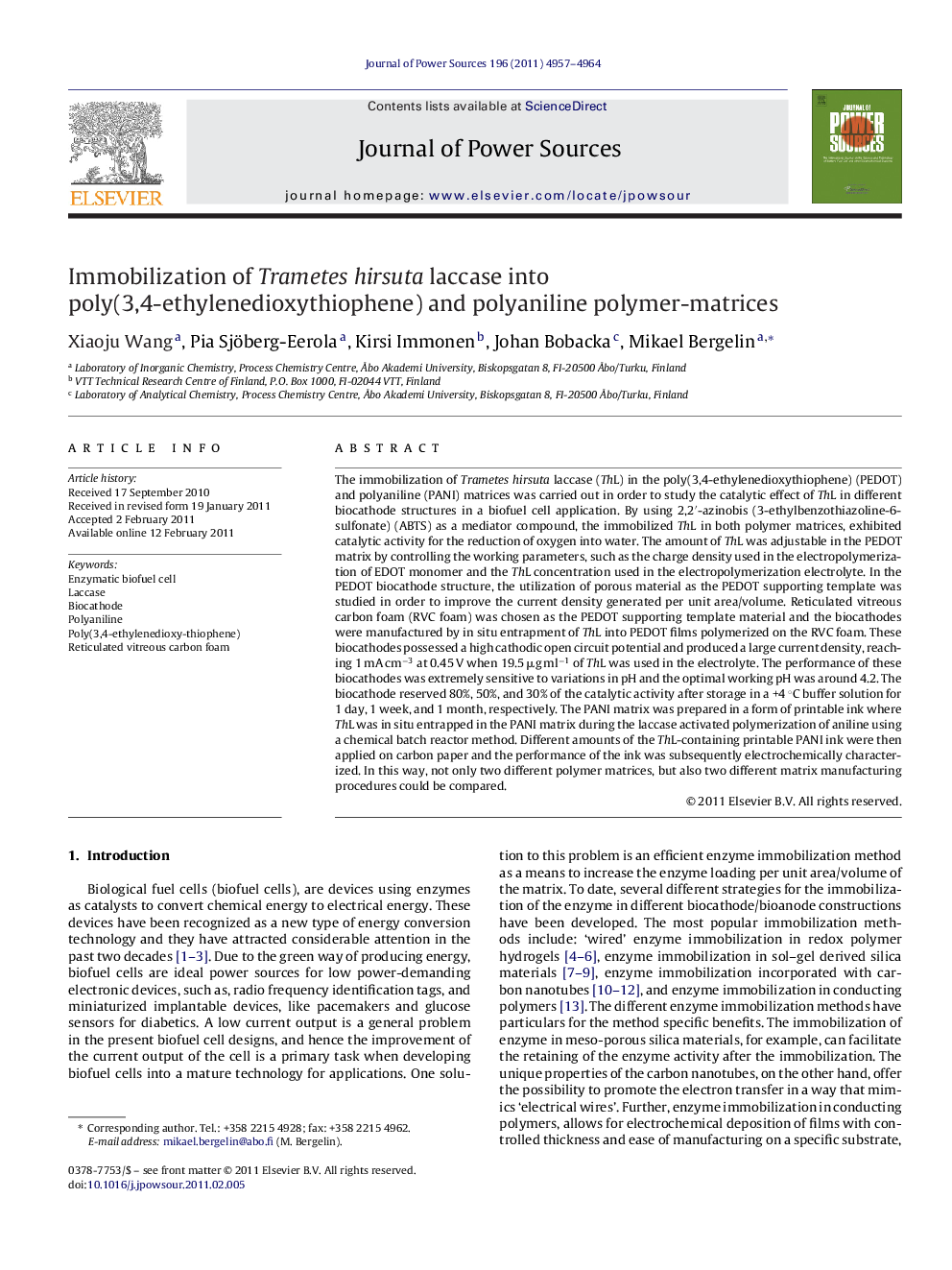| کد مقاله | کد نشریه | سال انتشار | مقاله انگلیسی | نسخه تمام متن |
|---|---|---|---|---|
| 1284761 | 973089 | 2011 | 8 صفحه PDF | دانلود رایگان |

The immobilization of Trametes hirsuta laccase (ThL) in the poly(3,4-ethylenedioxythiophene) (PEDOT) and polyaniline (PANI) matrices was carried out in order to study the catalytic effect of ThL in different biocathode structures in a biofuel cell application. By using 2,2′-azinobis (3-ethylbenzothiazoline-6-sulfonate) (ABTS) as a mediator compound, the immobilized ThL in both polymer matrices, exhibited catalytic activity for the reduction of oxygen into water. The amount of ThL was adjustable in the PEDOT matrix by controlling the working parameters, such as the charge density used in the electropolymerization of EDOT monomer and the ThL concentration used in the electropolymerization electrolyte. In the PEDOT biocathode structure, the utilization of porous material as the PEDOT supporting template was studied in order to improve the current density generated per unit area/volume. Reticulated vitreous carbon foam (RVC foam) was chosen as the PEDOT supporting template material and the biocathodes were manufactured by in situ entrapment of ThL into PEDOT films polymerized on the RVC foam. These biocathodes possessed a high cathodic open circuit potential and produced a large current density, reaching 1 mA cm−3 at 0.45 V when 19.5 μg ml−1 of ThL was used in the electrolyte. The performance of these biocathodes was extremely sensitive to variations in pH and the optimal working pH was around 4.2. The biocathode reserved 80%, 50%, and 30% of the catalytic activity after storage in a +4 °C buffer solution for 1 day, 1 week, and 1 month, respectively. The PANI matrix was prepared in a form of printable ink where ThL was in situ entrapped in the PANI matrix during the laccase activated polymerization of aniline using a chemical batch reactor method. Different amounts of the ThL-containing printable PANI ink were then applied on carbon paper and the performance of the ink was subsequently electrochemically characterized. In this way, not only two different polymer matrices, but also two different matrix manufacturing procedures could be compared.
Research highlights
► In situ entrapment of ThL in PEDOT film to catalyze the oxygen reduction.
► RVC foam-based biocathode: current density of 1 mA cm−3.
► RVC foam-based biocathode: pH sensitive with an optimum at pH 4.2.
► Laccase activated polymerization of aniline to immobilize ThL in biocathode.
Journal: Journal of Power Sources - Volume 196, Issue 11, 1 June 2011, Pages 4957–4964